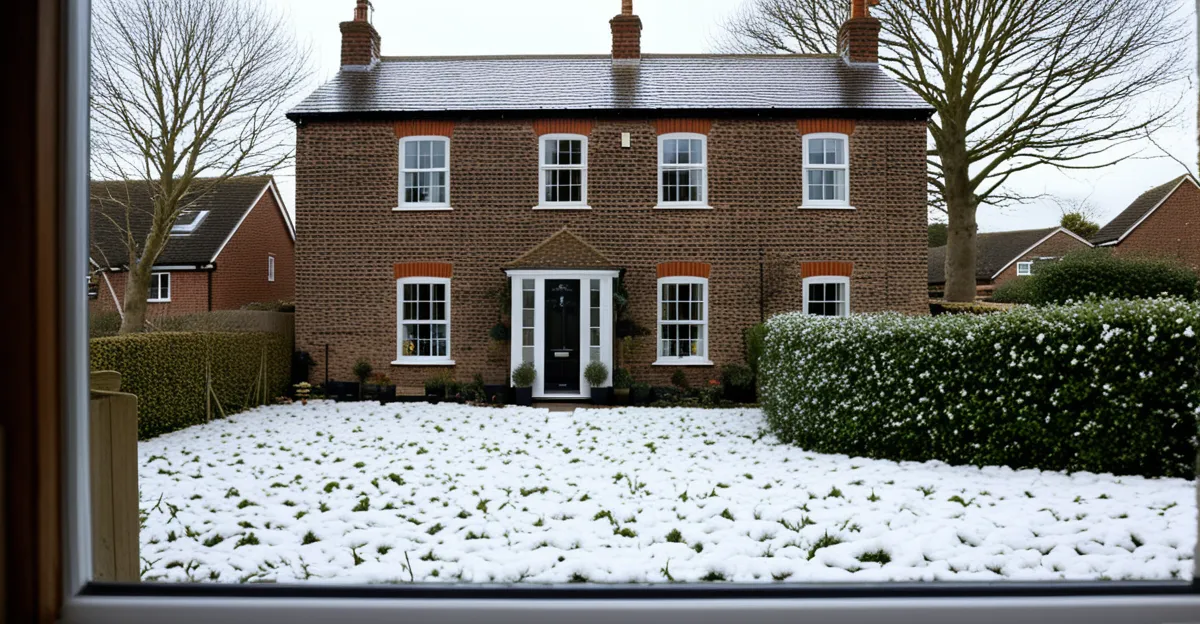Effective Insulation Strategies for UK Homes
Effective insulation is key to maintaining winter warmth and boosting energy efficiency in UK homes. Choosing the right materials for walls, roofs, and floors can drastically reduce heat loss. For walls, cavity wall insulation using foam or mineral wool fills gaps to trap heat. Roof insulation with high-density fiberglass or cellulose stops warm air from escaping upwards, while under-floor insulation limits cold drafts from below.
Upgrading existing insulation doesn’t have to be costly. Affordable methods include adding draft excluders and using thermal linings for backing insulation layers. Loft insulation top-ups are a popular, cost-effective way to enhance warmth and reduce heating bills. Installing insulation panels inside unheated rooms can also improve overall comfort.
Also to discover : How Do Home Decor Trends Reflect British Culture?
Insulation not only improves comfort but directly impacts heating costs by reducing the need for constant heating. Well-insulated UK homes conserve warmth, making central heating systems more efficient and lowering energy bills. Prioritising insulation upgrades can be one of the most effective winter-proofing strategies for both new builds and older properties.
Enhancing Warmth with Soft Furnishings
Soft furnishings play a crucial role in boosting comfort and retaining winter warmth in UK homes. Layering with throws, blankets, and cushions adds both insulation and a cozy atmosphere. Thick textiles trap air close to the body and fabric surfaces, reducing heat escape and making rooms feel warmer without cranking up the heating.
In the same genre : What Are Essential Design Elements for a Cozy UK Home?
Thermal curtains are particularly effective at slowing heat loss through windows—a major source of chill. Selecting heavy, lined curtains can keep warmth inside, especially overnight. Similarly, placing thick rugs on cold floors provides an insulating barrier that reduces heat transfer and cold drafts from below, enhancing overall energy efficiency.
When choosing fabrics, natural fibres like wool or fleece excel in cold climates due to their breathability and moisture-wicking properties. Combining textures such as velvet cushions and knit throws adds both tactile warmth and visual appeal, encouraging a snug living space during harsh UK winters.
In sum, integrating soft furnishings not only elevates style but also supports insulation efforts, allowing homeowners to improve warmth affordably. Layering textiles is a practical and inviting way to minimise heat loss and maintain a comfortable environment in UK homes throughout winter.
Optimising Heating Solutions
Enhancing energy efficiency in UK homes starts with smarter heating solutions. Central heating remains the primary system, but utilising it efficiently is key. Thermostatic radiator valves allow precise temperature control per room, preventing overheating and saving energy. Smart heating controls add convenience by learning household routines and adjusting temperatures accordingly, optimising heating use without sacrificing comfort.
For targeted warmth, portable heaters are effective in specific rooms, avoiding the need to heat the entire house continuously. These include electric fan heaters or oil-filled radiators, which offer flexibility during colder periods or for quick room warm-ups. Pairing portable heating with good insulation ensures retained heat and lower energy bills.
Energy-efficient heating solutions also incorporate regular maintenance, such as bleeding radiators to improve heat output and ensuring boilers are serviced for optimal performance. These steps support sustained winter warmth and enhance overall energy efficiency in UK homes.
In essence, employing thermostatic valves, smart controls, and portable heaters, combined with routine upkeep, creates a balanced, cost-effective heating strategy that addresses both comfort and energy consumption effectively.
Preventing Draughts and Sealing Gaps
Sealing gaps and draught-proofing are vital for maintaining winter warmth and improving energy efficiency in UK homes. Common draught sources include poorly fitted doors, window frames, letterboxes, and floorboards. Identifying these leaks early helps target areas where heat loss is most significant.
DIY draught excluders are an affordable and practical solution. For example, door stoppers made from fabric or rubber prevent cold air from entering under doors. Applying weatherstrips around windows and doors seals gaps effectively, significantly reducing unwanted cold drafts.
Window insulation films provide an extra barrier against cold air infiltration without costly window replacements. Such films trap a layer of still air, improving thermal resistance.
Regularly checking and maintaining seals ensures comfort stays high and heating bills stay low. Even small gaps can reduce indoor temperature, forcing heating systems to work harder. By focusing on draught-proofing, UK homeowners can minimise heat loss, creating a cosier environment while cutting energy consumption. Encouraging these simple yet impactful changes supports a more energy-efficient and warm home all winter long.
Lighting Adjustments for a Cozier Ambience
Small changes in lighting can transform UK homes into warm, inviting spaces during winter. Layered lighting—combining ceiling lights, floor lamps, and table lamps—creates depth and prevents harsh shadows. Choosing warm-toned bulbs with a colour temperature around 2700K enhances the feeling of comfort and softens interiors, mimicking natural sunlight.
Fairy lights and candles add charm and a gentle glow, encouraging relaxation during long, dark evenings. For example, placing candles near seating areas creates intimate pockets of warmth without excessive heat. This variety of lighting sources lets homeowners adjust brightness according to time and mood, supporting an adaptable, energy-efficient approach.
Maximising natural light also plays a crucial role, especially with shorter UK winter days. Keeping windows unobstructed during daylight hours allows for free ambient warmth and light, reducing reliance on artificial sources. Using light-coloured curtains or blinds further helps reflect daylight deeper into rooms.
In summary, combining different types of lighting is a simple, affordable strategy to boost winter cosiness while supporting energy efficiency in UK homes. This approach enhances both atmosphere and wellbeing, making chilly months more comfortable and visually appealing.
Affordable Décor Adjustments for Winter Comfort
Creating a cosy home during the UK winter can be achieved through simple, affordable home décor updates that enhance winter comfort. Using seasonal colour palettes—such as warm reds, deep oranges, and rich browns—adds visual warmth and complements existing furnishings. These colours invoke a sense of snugness and can brighten up cold, grey days. Adding small accessories like cushions, throws, and decorative baskets in these tones further layers the room with inviting textures.
Arranging furniture strategically also plays a crucial role. Positioning seating areas away from cold walls and close to heat sources like radiators or fireplaces maximises retained winter warmth. Grouping furniture in cosy clusters encourages gatherings and social warmth, while rugs underfoot enhance comfort and insulation.
Incorporating nature-inspired winter elements adds seasonal charm without overspending. Pine cones, bare branches, and evergreen sprigs bring the outdoors inside, creating a calming, comforting environment. These touches also work well with existing interiors, promoting a subtle festive feel.
Overall, focusing on colour, layout, and natural textures offers practical, budget-friendly ways for UK homeowners to transform their spaces into welcoming winter retreats, blending style with enhanced comfort.








